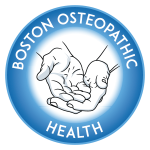In the U.S., there are two types of fully licensed physicians: a physician either earns the degree of medical doctor (M.D.) or doctor of osteopathic medicine (D.O.). Both professionals complete 4 years of medical school, complete specialty training, and take the same or comparable specialty board examinations. They are different in that a D.O. also studies osteopathic structural diagnosis, osteopathic philosophy and osteopathic manipulative medicine.
Osteopathic manipulative medicine is the application of osteopathic philosophy and structural diagnosis and the use of osteopathic manipulative treatment (OMT) in the diagnosis and management of the patient. In treating a chronic pain patient, an osteopathic physician will use osteopathic manipulation as part of an integrated treatment approach.
Osteopathic philosophy is comprised of four main tenets. 1. There is a structure and function relationship in the body. 2. The body has a self regulating mechanism. 3. Treat the body as a whole. 4. Osteopathic diagnosis and treatment is based on the first three tenets.
An osteopathic structural exam focuses on the neuromusculoskeletal system. Close attention is paid to posture, spine motion, and balance. A palpatory diagnosis is made over the entire body looking for restriction in motion and tenderness in ligaments, joints, tendons, muscles, and fascia. When an abnormality is palpated, OMT can be performed to improve or resolve the dysfunction.
OMT is a manual medical treatment. An osteopathic physician will diagnose and treat the entire body with his/her hands to evaluate ligaments, joints, tendons, muscles, and fascia. The goal of the treatment is to reduce pain, remove restrictions in motion, and improve injury or inadequate function.
 There are multiple types of osteopathic techniques. In general, a manual force is applied to a restricted area in order to release the restricted tissues. Techniques can range from gentle to slightly painful. Each treatment varies according to the individual patient’s need. In other words, there are no protocols for a specific diagnosis. For example, the treatment of carpal tunnel syndrome would depend on the osteopathic exam findings and would be different from patient to patient.
There are multiple types of osteopathic techniques. In general, a manual force is applied to a restricted area in order to release the restricted tissues. Techniques can range from gentle to slightly painful. Each treatment varies according to the individual patient’s need. In other words, there are no protocols for a specific diagnosis. For example, the treatment of carpal tunnel syndrome would depend on the osteopathic exam findings and would be different from patient to patient.
In chronic pain, OMT is employed for multiple reasons. It is applied to restore proper posture and efficient use of the musculoskeletal components. OMT also addresses dysfunction in respiratory mechanics, circulation, and the flow of body fluids. It is used to reduce mechanical stresses, balance neural inputs, and eliminate nociceptive drive. Somatic dysfunction in the musculoskeletal system may be a reaction to environmental, socioeconomic, cultural or psychological events, but can in turn reinforce the physiologic stress. OMT addresses somatic dysfunction that has the potential to dysregulate the production, distribution, or expenditure of metabolic energy.
All D.O.s are trained to use OMT to treat and prevent illness or injury including chronic pain. There are specialists who are board certified in neuromusculoskeletal medicine/osteopathic manipulative medicine (NMM/OMM). NMM/OMM is a small osteopathic specialty group and those boarded in this specialty practice OMT mainly as consultants. A large number of osteopathic family physicians and other primary care specialists also use OMT for their patients and some will take outside referrals. Osteopathic physical medicine and rehabilitation specialists often use OMT, especially in their chronic pain patients. Other sub-specialists do use OMT, but it is rare.
OMT is prescribed on a visit to visit basis. The interval between follow ups depends on the medical condition, whether it is chronic or acute, and on the patient’s overall health. The follow up appointment is generally decided upon after each visit. Appointments scheduled in this way results in fewer visits compared with other types of manipulation.
Any patient with chronic pain can potentially benefit from OMT. Consider referring a patient for OMT if he or she has chronic back pain, neck pain, radiculopathy, sciatica, joint pain syndromes, fibromyalgia, traumatic injury, overuse syndrome, carpal tunnel syndrome, costochondritis, extremity pain, TMJ syndrome, migraines, tension headaches, or musculoskeletal pain in pregnancy.
